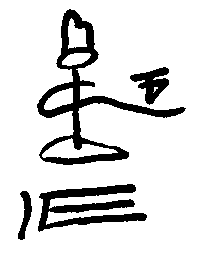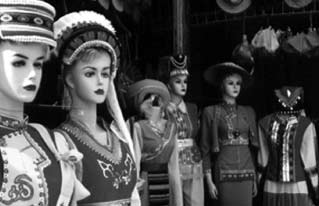|
Cultures and Conflict The English word “conflict” comes from the Latin com-, meaning “together,” and fligere, meaning “to strike.” The term denotes a sharp disagreement, especially in terms of interests or ideas. Conflict is difficult because of the emotional and psychological tension that it entails. However, as its etymology suggests, conflict can also be empowering because of the action and solidarity that ensues from it. If culture is a process that defines the rules and limitations of interaction, then conflict can be seen as an important element of culture. But the promotion of cultural cooperation often denies the presence of conflict; it often has to give a semblance of harmony. But it is precisely this altruistic language of culture that can be used to obscure power and inequality from which conflict may arise; the determination to facilitate understanding through mutual knowledge obscures the processes—and the language—of hegemony of one culture over another. Defining culture in the context of development, there is a prevailing optimism about the nature of development, especially within the international and multicultural spheres. If conflict entered the dominant positivist model of culture and cooperation, then we would have begun a questioning of the conventional conceptualisations and practices of development. All this would also require looking into the situation and role of women as the bearers, protectors, and preservers of cultural heritage. |
Ethnic Minority People in Yunnan: Naxi Culture and the Role of Women by Andrea Stelzner with Ge A-gan and He Xiaoxun
Southwest China’s Yunnan Province is home to 26 officially recognised ethnic minorities—who account for one third (approx. 15 million) of the total population of the province—and is also home to about 29 million Han Chinese. The Han constitute the majority of the people in China. Their history has been recorded in the official annals, while ethnic minorities have been merely mentioned therein. The status and recognition of ethnic minorities has changed—from being heroes defending the Han Chinese "Central Kingdom’s" frontier regions against barbarian aggressions from the outside, to being referred to as "uncivilised frontier people" themselves.
The Southwest (as well as other regions of China) had been invaded many times in the course of the Chinese emperors’ attempts to unify the empire. Through these invasions, culturally uniform Han Chinese standards and values were introduced to ethnic minorities’ civilisations. On the other hand, inter-ethnic and cross-cultural exchanges were common along the trade routes in the mountainous regions of Yunnan Province.

Pancisamei, the female saint honored in Dongba script
Lijiang is one of the cities of Yunnan. Lijiang City’s old town Dayan Township, northwest of the Province, used to be the capital of the ancient Naxi Kingdom. The town was an important fortress on the Yunnan-Tibet "Old Tea Trade Route." It lies at the foot of the Jade Dragon Snow Mountain, and was built around the end of the twelfth century. Being part of the Southern Silk Road, people in the town have been in touch with various other cultures and religions. The Naxi Kingdom itself had integrated Han Buddhism, Tibetan Buddhism and Taoism to its own belief system.
Ethnic minority people’s identities in China have been difficult to define. Out of over 450 ethnic minorities’ claims for an official status as ethnic minority, 260 applications came from Yunnan Province during the nationwide ethnologic identification project conducted in the late fifties by the Central Government. The Central Government finally classified 26 ethnic minority groups as more or less "developed" on a Marxist-Leninist scaling system. But official recognition of ethnic minority people, and, especially, ethnic minority women, in China has not improved—even if more liberal economic policies were introduced in the early eighties.
The image created of Yunnan Province’s ethnic minority women is often that of entertaining merrymakers: In the centre of the attraction of social scientists, artists, journalists, and tourists, these women are performing and dressed up in exotic, colorful clothes. As Evans (1999) wrote: "Ethnic women emerge as the exotic embodiment of a range of imaginaries, fantasies, and sublimations that the dominant discourse denied in the representing of Han [Chinese] women."
Apart from being featured in colorfully illustrated coffeetable books, paintings, and on video compact discs (VCDs), ethnic minority women are embodied in wood carvings, ceramics, batik tablecloths, and bronze sculptures. Souvenir shops all over China are selling these artifacts with standardised symbols and motifs of erotic ethnic minority women. Dai (Thai) women’s images are sold in Lijiang, where the Dai (Thai) do not live; oil paintings of Tibetan females can be found on the borders with Thailand.
But women of the Naxi and Mosuo ethnic groups in Yunnan have a slightly different status from those of other ethnic minorities in the province.1 Naxi and Mosuo belong to the Na ethnic group: The Naxi—with most of its members living in Lijiang City—is a patrilinear society; the Naruo (commonly called Mosuo)2 is a matrilinear community, living on Lugu Lake (approx. 300 km from Lijiang). Mosuo society’s most outstanding feature is the tradition of Zouhun (walking marriage), implying that women (and their children) are the central members of a family household. While it continues to be the norm in Chinese communities for a woman to move in with her husband’s family, it is commonly accepted in Na communities that the husband moves in with his wife’s family. Another matrilineal characteristic of Mosuo and Naxi societies is that a woman can take over the family inheritance.
Parallel to the vanishing of matriarchal ethnic minority livelihoods, women’s social status has been declining. Men have taken over the role of masters of divination.
Women have played a major role in the creation of civilisations in the past. They should therefore be called the "Spirits of Culture." In the context of globalisation’s influence on society and the difficulties in trying to preserve ethnic minority’s culture and value systems, women’s historical role is again of great importance.
The Dongba is the ceremonial master of sacred rituals celebrated by the Naxi. As a medium interconnecting the present world with spiritual hemispheres, the Naxi Dongba has been a very important person in teaching and passing on Naxi culture as the Naxi pictographic script is the nucleus of Dongba culture. A saying goes that "A Dongba does not pass on his knowledge to women, but only to men." But, ironically enough, there is a female saint honored in each and every Dongba script. The name of this goddess is Pancisamei. Among the many saints in the Naxi belief system, she is the master of divination rituals. The knowledge and skills of divination is passed down through sacred scripts to each Dongba. Whenever conducting a divination ritual, a Dongba makes a sacrifice to invite Pancisamei to attend.3
Albeit that Naxi Dongbas continue to revere the goddess Pancisamei, not a single female Dongba exists. Parallel to the vanishing of matriarchal ethnic minority livelihoods, women’s social status has been declining. Men have taken over the role of masters of divination.4
The reverence of a goddess, however, is not unique to Naxi culture. The majority of inscriptions on bones or tortoise shells dating back to the historical Han Chinese Shang and Zhou Dynasties are, in fact, documentations of divination rituals conducted by Wuxian—a female Han Chinese divination master. This "Female Emperor" and ritual master eventually disappeared in later historical records. Instead, the Shang Dynasty emperors are mentioned among the more than a hundred divination ritual masters found on bone or tortoise shell inscriptions. No word about the former goddess. In due course, female ritual mediums’ powerful intuition and foresight were less and less respected. Divination rituals, which used to be considered an important source of wisdom, have become to be stigmatised as "unscientific" and "superstition."

Standardised depictions of “erotic” ethnic minority women
Nonetheless, people would consult Daoist Wushi or their female counterparts called Wupo, both experts in the fields of astrology, Feng Shui, herbal medicine, and other nature-related knowledge, to find solutions for their problems. But the terms "Wushi" and "Wupo" have become derogative since a few decades ago. Eventually, for example, the common understanding of a woman with such knowledge and skills was transformed from the status of a highly respected goddess to that of a witch.
Having less and less old Naxi Dongbas, and with young Naxi men leaving their communities for business activities elsewhere, there has been this observation on the role of women in passing on Naxi culture: Besides being in charge of household and agricultural chores, Naxi women—not necessarily the eldest son in a family—take care of the elder generation. Naxi women carry the responsibility to support and harmoniously develop the affairs of the household and the community. Naxi women are renowned to be independent, strong minded, clever, and very skilled individuals; they are highly respected members of a Naxi family and their communities. With thriving tourism and the increasing influence of urbanism, the Naxi culture, which is based on an agricultural civilisation system, is being challenged.
In recent years, Yunnan Province’s cultural heritage and biodiversity have been recognised scientifically and commercially. While the commercial value of the exotic "Otherness" of ethnic minority people is being exploited, local and international non-government organisations (NGOs) try to protect the people’s livelihoods and natural resources from non-local investors’ profit-oriented influence. Lijiang City has been assigned the status of a triple World Heritage Site, bestowed on the old City’s architectural heritage, the Dongba script cultural heritage, and the "Three Parallel Rivers" heritage. Being a World Heritage Site gives Lijiang City a special status among other ethnic minority communities, and could play an important role when it comes to answering the question of whether an ethnic minority cultural heritage could be protected or not, and which of its features could be protected.
As Naxi culture is undergoing diverse changes and is facing a major threat in the process of widespread development, many challenges are once again shouldered by Naxi women. The women tend to have very intimate and comparatively stable familial and communal relationships. This is very important for the preservation of Naxi culture. The old saying that a Dongba’s knowledge is not passed on to women should be changed and developed in due course.
Endnotes
1 Naxi population in Yunnan: 290,000; Mosuo population in Yunnan: 20,000
2 According to the Naxi researcher Bao Jiang (Ph.D.), the Mosuo were given this name by the Han Chinese, but they call themselves Naruo people.
3 Analysis by Ge A-gan, one of the authors of this article, who has been researching traditional Naxi culture and especially the Naxi Dongba belief system for more than 20 years.
4 A-gan, G. (1999). Ancient Dongba Divination Ritual and Knowledge. Yunnan People’s Publishing House.





 The
The 
 Isis Resource Center holds one of the largest feminist collections of materials in the Global South. With 40 years of publication experience, Isis holds a vast collection.
Isis Resource Center holds one of the largest feminist collections of materials in the Global South. With 40 years of publication experience, Isis holds a vast collection.